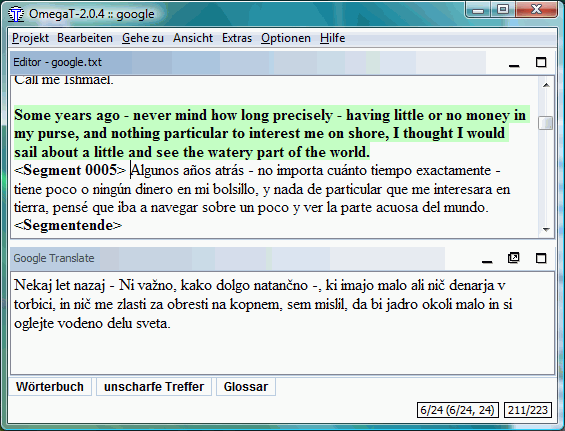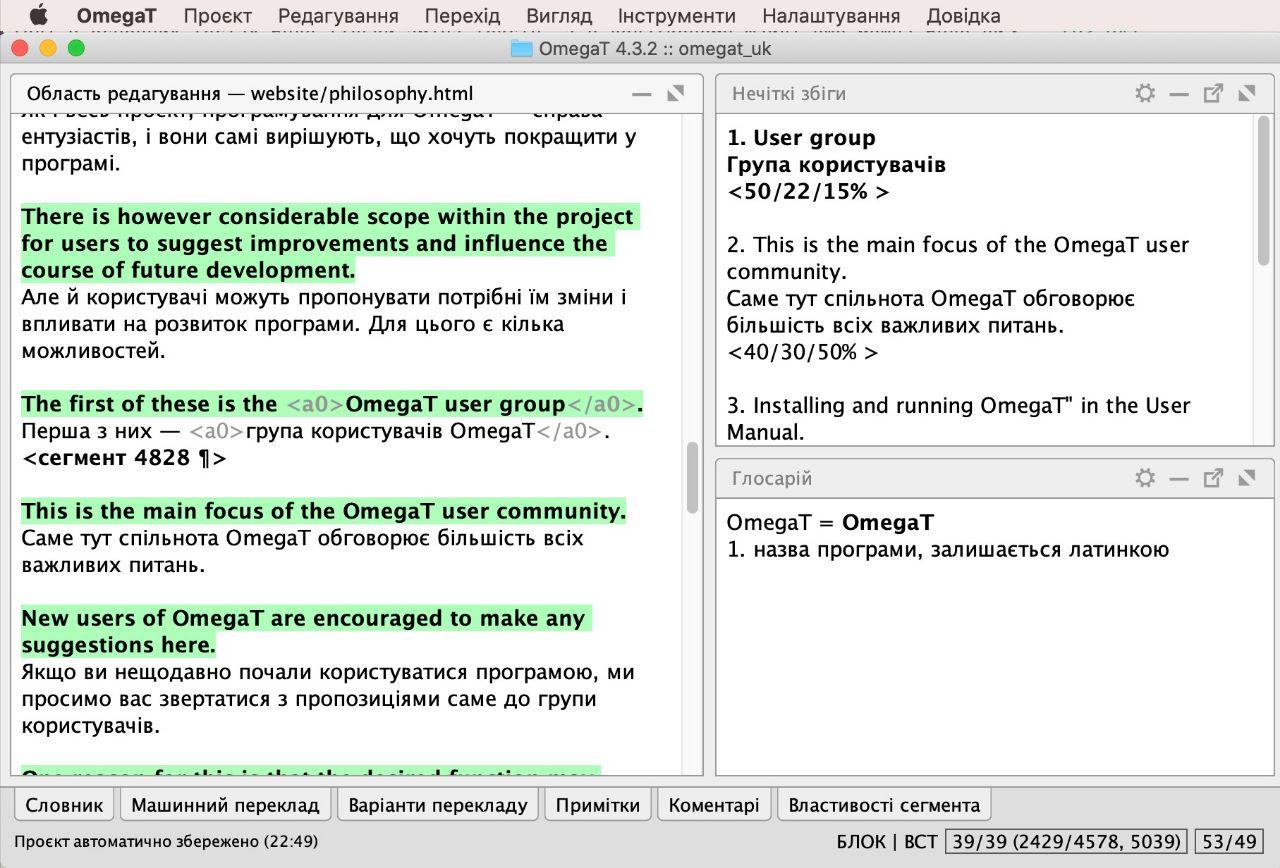

- OMEGAT GOOGLE TRANSLATE MANUAL
- OMEGAT GOOGLE TRANSLATE SOFTWARE
- OMEGAT GOOGLE TRANSLATE CODE
- OMEGAT GOOGLE TRANSLATE PROFESSIONAL
- OMEGAT GOOGLE TRANSLATE WINDOWS
The user can also choose how non-standard elements in third-party translation memories should be handled. in Writer files, choose whether to include bookmarks in Microsoft Office 2007/2010 files, choose whether to translate footnotes or in HTML, choose whether to translate ALT text for images). For a number of document types, the user can choose selectively which elements must be translated (e.g.

OMEGAT GOOGLE TRANSLATE CODE
Version 3.1 added a setting for blocking targets equal to their sources, a common slip, plus a keyboard shortcut for overriding it-numbers, source code in programming manuals, etc.Īt any point, the user can create partially translated versions of the source files. No change, naturally enough, means no such update. It subsequently saves that database to disk in Translation Memory eXchange (.tmx) format for use another day, in other projects, by other translators, and even with other CAT tools. When the user leaves a segment, OmegaT normally first adds the source-target pair to its database in memory. The optional Machine Translation pane shows machine translations from Google Translate and similar services. The Glossary and Dictionary panes provide similar automatic look-up functions for any glossaries and dictionaries in the corresponding named folders in the project. tmx files in the /tm/ hierarchy for previous translation pairs with similar source sentences and displays them in the Fuzzy Matches pane for insertion into the Editor pane with a keyboard shortcut. When the user goes to translate a segment in the Editor pane, OmegaT automatically searches the. tmx format, /tm/auto/ for automatic translation of 100% matches, /glossary/ for glossaries, /dictionary/ for StarDict (and. Other named folders include ones for automatic consultation within the program: /tm/ for existing translation pairs in. OmegaT, when directed, generates the (partially) translated versions in the /target/ subfolder. The Editor pane displays the source documents as individual “segments” for translation one segment at a time. The user copies non-translated documents into one named /source/ (or subfolders thereof). OmegaT handles a translation job as a project, a hierarchy of folders with specific names. The updated sources are always available from the SourceForge code repository.
OMEGAT GOOGLE TRANSLATE MANUAL
There is a "standard" version, which always has a complete user manual and a "latest" version which includes features that are not yet documented in the user manual. As with many open source projects, new versions of OmegaT are released frequently, usually with 2-3 bugfixes and feature updates each. The development team is led by Aaron Madlon-Kay. The development of OmegaT is hosted on SourceForge. It could translate unformatted text files, and HTML, and perform only block-level segmentation (i.e.

This version used a proprietary translation memory format.

The first public release in February 2001 was written in Java. OmegaT was first developed by Keith Godfrey in 2000.
OMEGAT GOOGLE TRANSLATE PROFESSIONAL
According to a survey in 2010 among 458 professional translators, OmegaT is used 1/3 as much as Wordfast, Déjà Vu and MemoQ, and 1/8 as much as the market leader Trados.
OMEGAT GOOGLE TRANSLATE WINDOWS
OmegaT runs on Linux, macOS, Microsoft Windows and Solaris, and requires Java 8. Its features include customisable segmentation using regular expressions, translation memory with fuzzy matching and match propagation, glossary matching, dictionary matching, translation memory and reference material searching, and inline spell-checking using Hunspell spelling dictionaries. OmegaT is intended for professional translators.
OMEGAT GOOGLE TRANSLATE SOFTWARE
It is free software originally developed by Keith Godfrey in 2000, and is currently developed by a team led by Aaron Madlon-Kay. OmegaT is a computer-assisted translation tool written in the Java programming language.


 0 kommentar(er)
0 kommentar(er)
